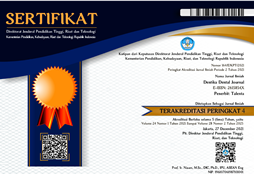The Study of Antifungal Activity of Betadine (Jatropha multifida) Stem Sap Extract against Candida albicans Growth In Vitro
DOI:
https://doi.org/10.32734/dentika.v28i1.10699Keywords:
Candida Albicans, Candidiasis, Jatropha Multifida, SapAbstract
Indonesia has many medicinal plants that can be used to treat various diseases, especially infectious diseases. Several infections are caused by a fungus (yeast) of Candida albicans. Candida albicans is a normal oral cavity flora, but it is also an opportunistic pathogen that causes diseases such as candidiasis. Betadine stem sap (Jatropha multifida) has been widely used in humans to heal wounds and treat fungal infections. This study evaluated the antifungal activity of betadine stem sap extract at concentrations of 25, 50, 75, and 100% with nystatin as positive control and DMSO as negative control. Betadine stem sap extract was obtained using the maceration method with DMSO as a solvent. This study is a true experimental study using a post-test-only control group design. The method used is Kirby-Bauer disk diffusion using potato dextrose agar as the medium. The data obtained were tested using one-way ANOVA and post hoc LSD test. As a result, the betadine stem sap extract at 100% concentration showed the highest mean diameter of the inhibition at 20.8 mm, and the lowest at 25% concentration was 17.5 mm. This study concluded that betadine stem sap extract showed antifungal activity in which 100% of the extract inhibited the growth of Candida albicans yeast the most compared to nystatin (p < 0.05).
Downloads

Downloads
Published
How to Cite
Issue
Section
License
Copyright (c) 2025 Siti Aminah, Hendry Rusdy

This work is licensed under a Creative Commons Attribution-ShareAlike 4.0 International License.

















